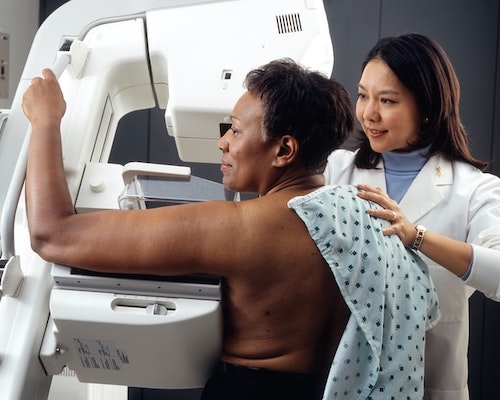Breast cancer affects 1 in 8 women in their lifetime. Mammogram is the most common and cost-effective breast cancer screening tool we have today, but it’s not perfect. Dense breast tissue can decrease the accuracy of the results. Learn what other screening tests could improve cancer detection and how often you should use them. Keep in mind that some of these tests may be more expensive and may not be covered by insurance.
Know Your Breast Cancer Screening Tools
Breast cancer screening recommendations have evolved over time.
| Medical Organization | Current Recommendation |
| American Cancer Society (ACS) | 40-44 years old: Mammogram screening is an individual decision. 45-54 years old: Mammogram screening is recommended every year. 55+ years old: Mammogram screening can be decreased to every 2 years. |
| American College of Obstetrics and Gynecology (ACOG) | 40-49 years old: Mammogram screening is an individual decision. 50-74 years old: Mammogram screening is recommended every 1-2 years. 75+ years old: Mammogram screening is an individual decision. |
| U.S. Preventive Services Task Force (USPSTF) | 40-74 years old: Mammogram screening is recommended every 2 years in cisgender women and everyone else assigned female at birth. |
Addressing The Transgender Community
The USPSF expanded their recommendation in May 2023. Previously, they did not recommend routine screening for women 40-49 years old. With the current recommendation, they also addressed the needs of the transgender community, including “everyone assigned female at birth”.
Earlier Screening and Breast MRI
The American College of Radiology (ACR) also changed their recommendations in May 2023. They encouraged all women to undergo risk factor screening at 25 years of age. Those who had a > 20% risk (there are different tools to measure this), who had prior chest radiation, or who had a genetic predispositions to breast cancer (i.e., BRCA genes) should be screened with an MRI between 25 and 30 and start annual mammography between 25 and 40 based on their risk level. The issue is whether or not insurance will cover it. Expect a lot of prior authorizations if your provider recommends screening at an earlier age, especially if they order a breast MRI.
Breast ultrasound may help to assess dense breast tissue.
Diagnosis Life summary:
Dense breasts can make it difficult for your doctor to detect cancer on a mammogram. This could be because you have less fat in your breast tissues, you have a lot of glands or ducts in the breasts, and/or those glands and ducts are close together. This dense tissue appears white on a mammogram. Unfortunately, cancer also looks white. It can be hard to tease them apart. A meta-analysis and systematic analysis of 26 studies in the Journal of Global Oncology (https://doi.org/10.1200/JGO.19.00127) looked to see if ultrasound could help with this. Ultrasound showed 80% sensitive (true positive rate) and 88% specific (true negative rate) in detecting breast cancer in women with dense breasts. Using ultrasound and mammogram together may be more effective in detecting breast cancer.
Digital breast tomosynthesis increases sensitivity in breast cancer screening.
Diagnosis Life summary:
Digital breast tomosynthesis sounds technical but it’s really just a 3D mammogram. By adding dimension to a mammogram, it could be easier to distinguish cancer from dense breast tissue. A meta-analysis and systemic review of 16 studies in BMC Cancer (https://doi.org/10.1186/s12885-018-4263-3) looked at the effectiveness of breast tomosynthesis vs. regular mammography for detecting cancer in women with dense breast tissue. Tomosynthesis increased diagnostic sensitivity to 84-90% vs 69-86% for regular mammograms.
MRI may help to detect cancer in dense breast tissue.
Diagnosis Life summary:
There are other tools to help assess dense breast tissue. A randomized control trial in the New England Journal of Medicine (https://doi.org/10.1056/NEJMoa1903986) looked at approximately 40,000 women with dense breast tissue. Their ages ranged from 50 to 75 years old. Researchers assigned them to breast MRI and mammography together or mammogram screening alone. Over 2 years, MRI showed 95% sensitivity and 92% specificity. That means there was an 8% false positive rate. “Of the women who underwent a breast biopsy on the basis of an MRI indication, 26.3% had breast cancer and 73.7% did not.”


Leave a Reply